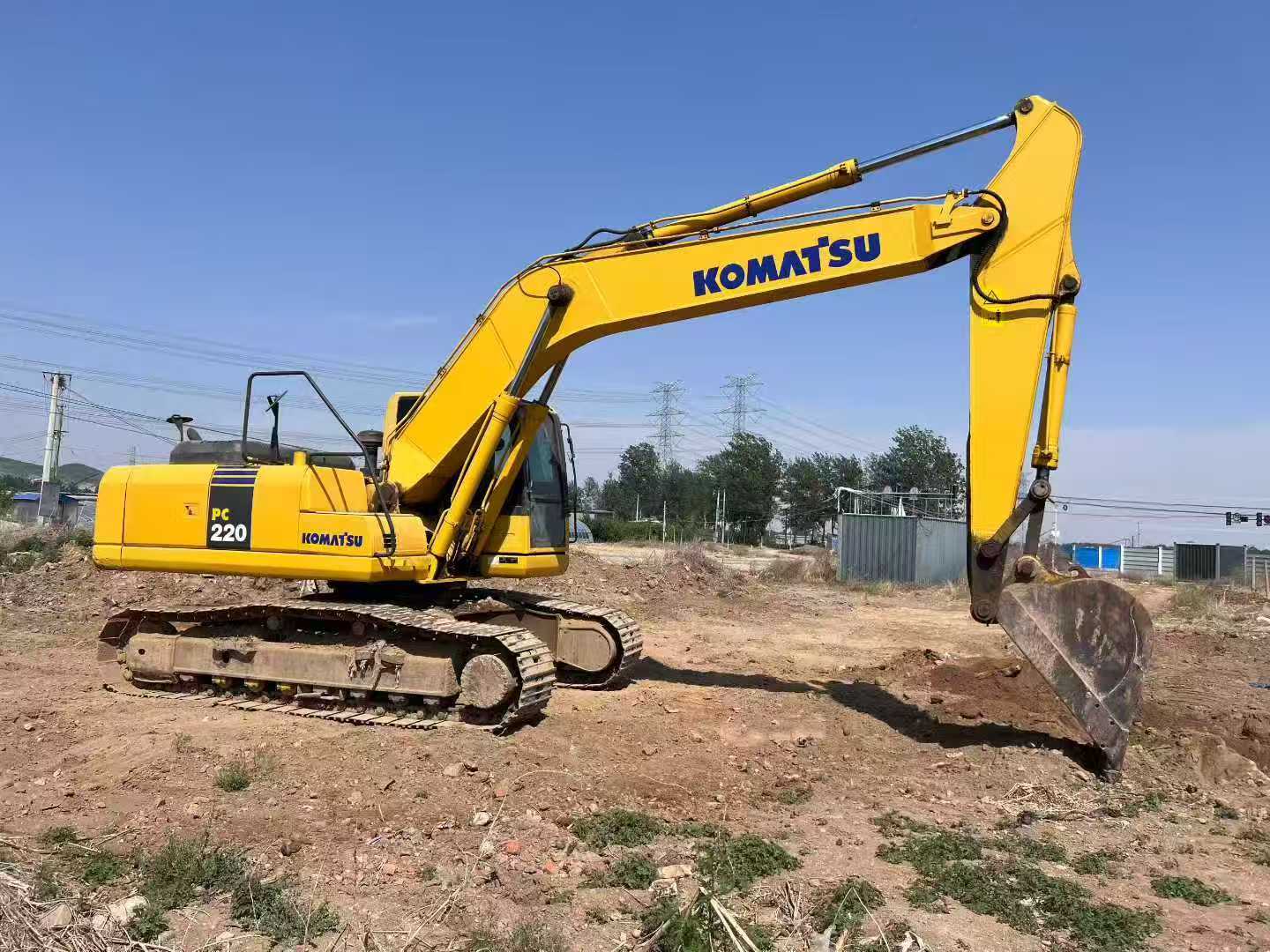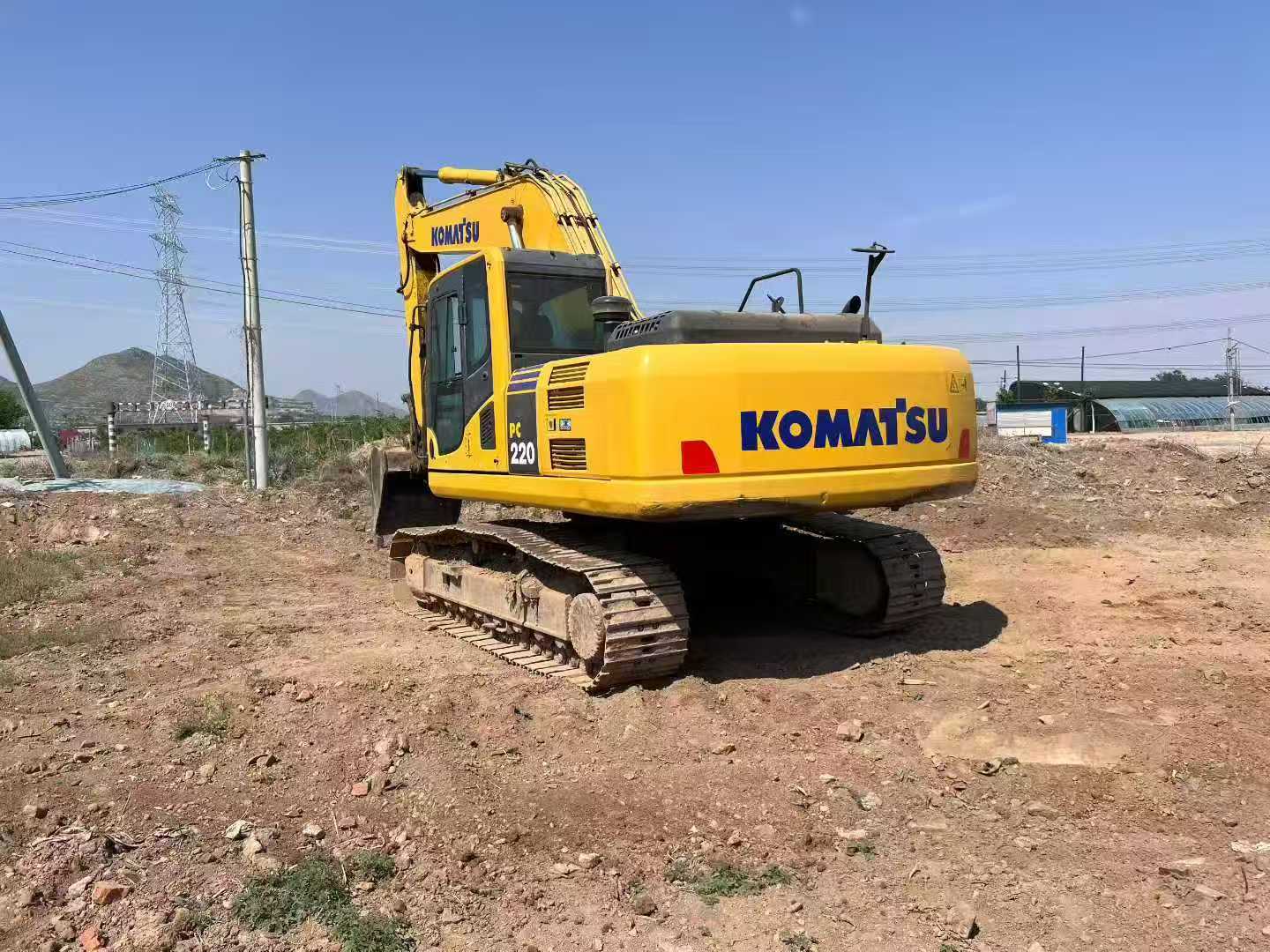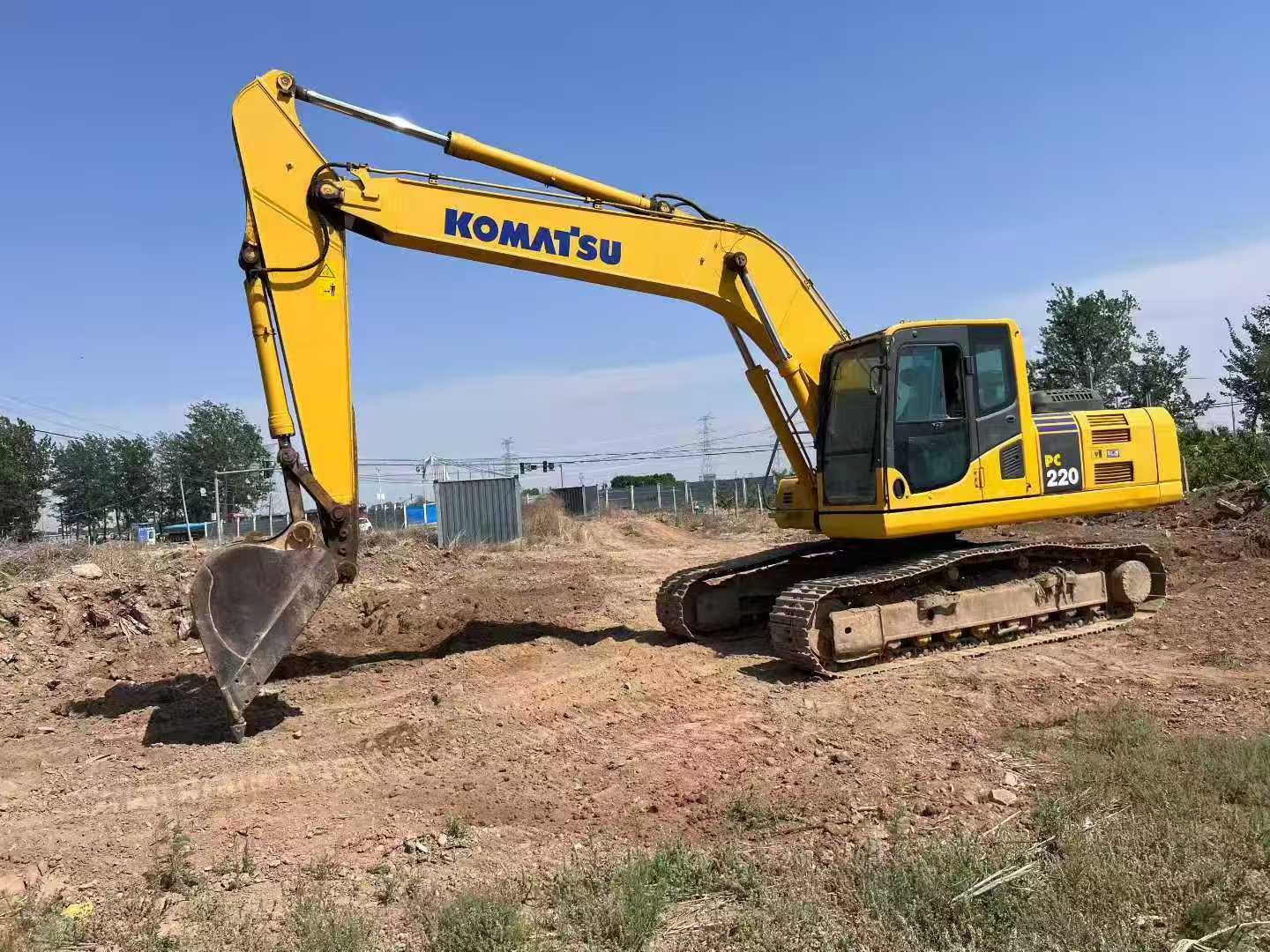The Komatsu 220-8MO features high efficiency in operation, precise control, excellent reliability, and good energy-saving performance. The CLSS system provides a comfortable operating feel for the excavator, with high precision in movements. Operators can precisely control the digging actions, whether for detailed excavation or large-scale earthwork projects, and complete the tasks more effectively.
Abount Komatsu Excavators PC220-8MO
Description
This is a 2017 model of a used Komatsu, with the model number PC220 - 8M0. Its service life is relatively short, but it has stable performance and is suitable for various working environments. At the same time, its cost performance is very high. The original factory parts of the Kahoiki brand can be replaced at will, so it is a high-quality product that buyers can trust.

Komatsu Excavators 220-8MO Specificaion
Operating Weight: 23,600 - 24,200 kg
Bucket Capacity: 1.03 - 1.45 m³
Engine Model: Komatsu SAA6D107E - 1
Rated Power: 123 kW
Rated Speed: 2,000 r/min
Displacement: 6.69 L
Number of Cylinders: 6
Main Pump Type: Variable - displacement piston pump
Maximum Main Pump Flow: 439 L/min
Working Hydraulic Circuit Pressure: 37.3 MPa
Travel Hydraulic Circuit Pressure: 37.3 MPa
Swing Hydraulic Circuit Pressure: 28.9 MPa
Fuel Tank Capacity: 400 L
Hydraulic Tank Capacity: 135 L

Performance characteristic
Equipped with the new "SIH:S+" hydraulic system, it enhances the power-saving function, eliminating energy waste in the hydraulic system. It also has a standstill shutdown function, which optimizes the control system during operation, effectively reducing the energy consumption of the hydraulic system and achieving the combination of efficient operation and low fuel consumption. The hydraulic system adopts a design combining a hydraulic oil tank breathing valve and a large hydraulic oil filter element. The breathing valve can prevent impurities from entering the hydraulic system, and the large hydraulic oil filter element can effectively filter impurities in the hydraulic oil, enhancing the reliability and durability of the hydraulic system and ensuring the long-term stable operation of the machine. When combined with the SAA6D107E-1 high-pressure common rail engine, it can achieve the priority mode for large-scale operations. It can also automatically reduce the engine speed and cooperate with the fuel-saving economic mode. While achieving high operational efficiency, it also reduces fuel consumption.
In order to ensure that our quality can reassure and satisfy customers We will conduct a detailed inspection of each excavator to ensure that each one is in good working condition. Before the machinery is dispatched, for each piece of equipment, we will replace the engine oil, hydraulic oil, gear oil, new air filter, oil filter, diesel filter, as well as the oil inlet/return/pilot/pipeline filter elements. Other damaged parts will also be replaced with new ones.

Maintenance
1.Engine oil needs to be replaced regularly, with a general replacement cycle of 500 hours.
2.Hydraulic oil should be replaced according to the prescribed maintenance cycle, which is 2,500 to 3,000 hours.
3.Timely addition of lubricating grease can effectively reduce the wear of each component and ensure smooth operation of all components.
4.Regularly clean or replace the air filter element and air filter to ensure that the engine sucks in clean air and improve fuel efficiency. In harsh working conditions such as heavy dust, the frequency of inspections should be increased.
5.Check the coolant level to keep the cooling system unobstructed and prevent overheating.
6.Clean the radiator. When an excavator is in operation, it generates a large amount of heat. The cleaning of the radiator is very important for maintaining the normal operation of the engine. 7. Tracks are important components of excavators. Appropriate track tension can extend the service life of tracks. Regularly inspect and adjust the tension of the tracks to ensure they are within a consistent standard range.
7.The transmission system is an important component of an excavator. Regular checks should be conducted on the transmission chain, gears and other parts, and severely worn components should be replaced in a timely manner.
Through the above daily maintenance measures, faults can be effectively prevented, the service life of excavators can be prolonged, and the safety and smooth progress of work can be ensured